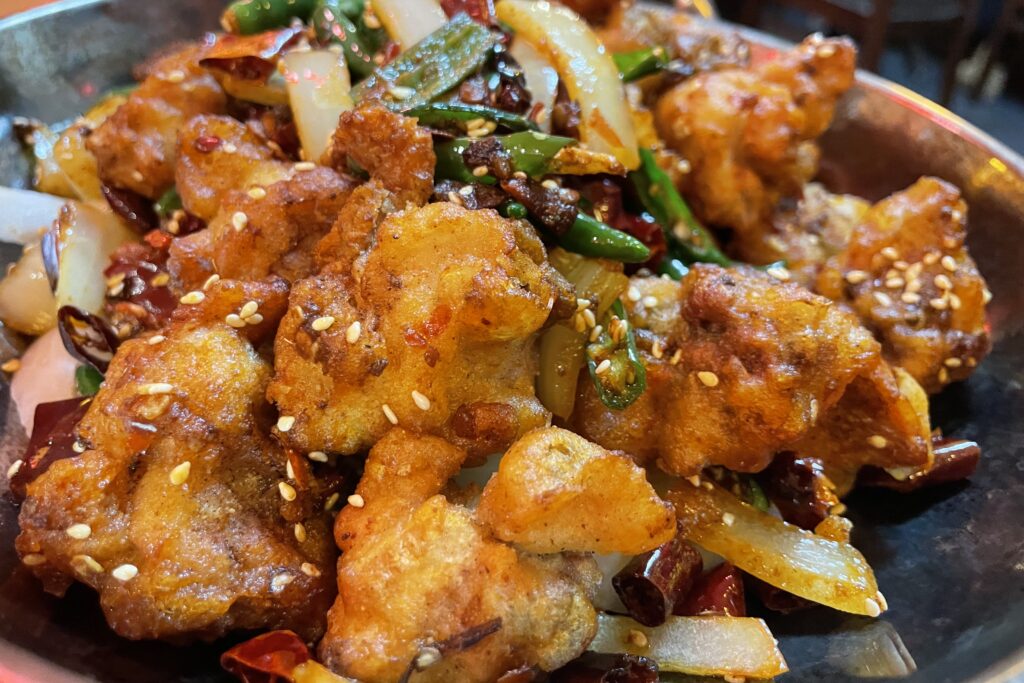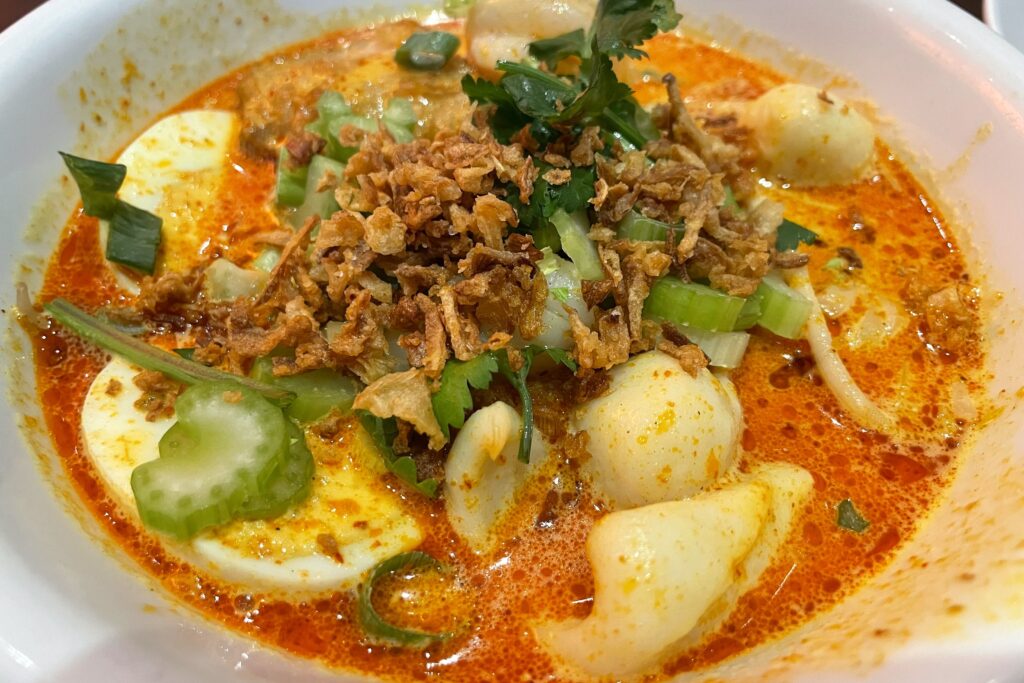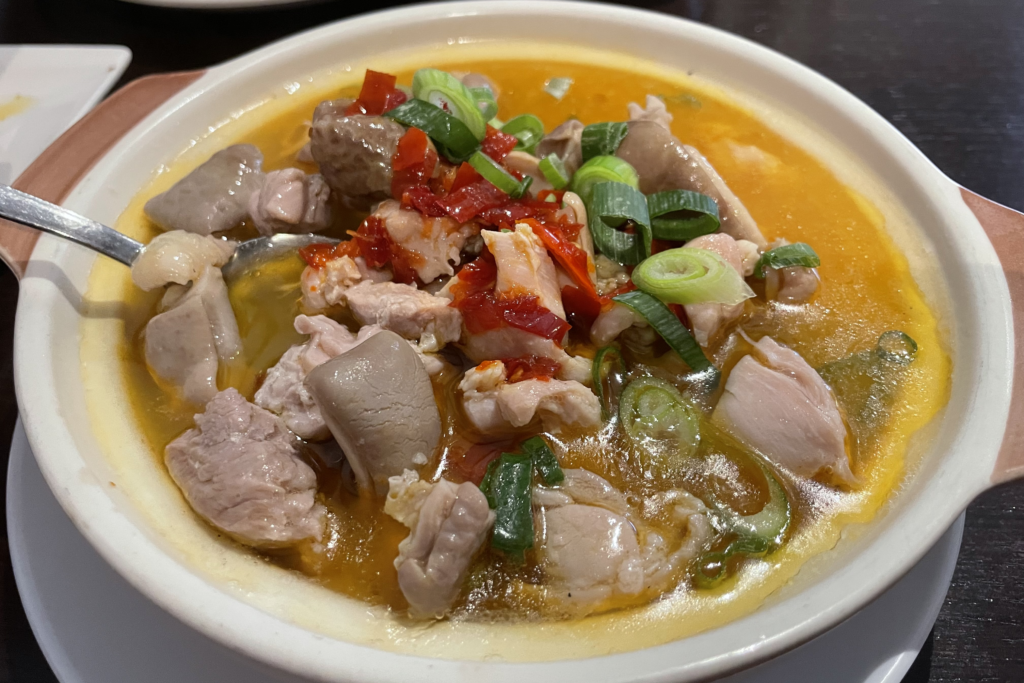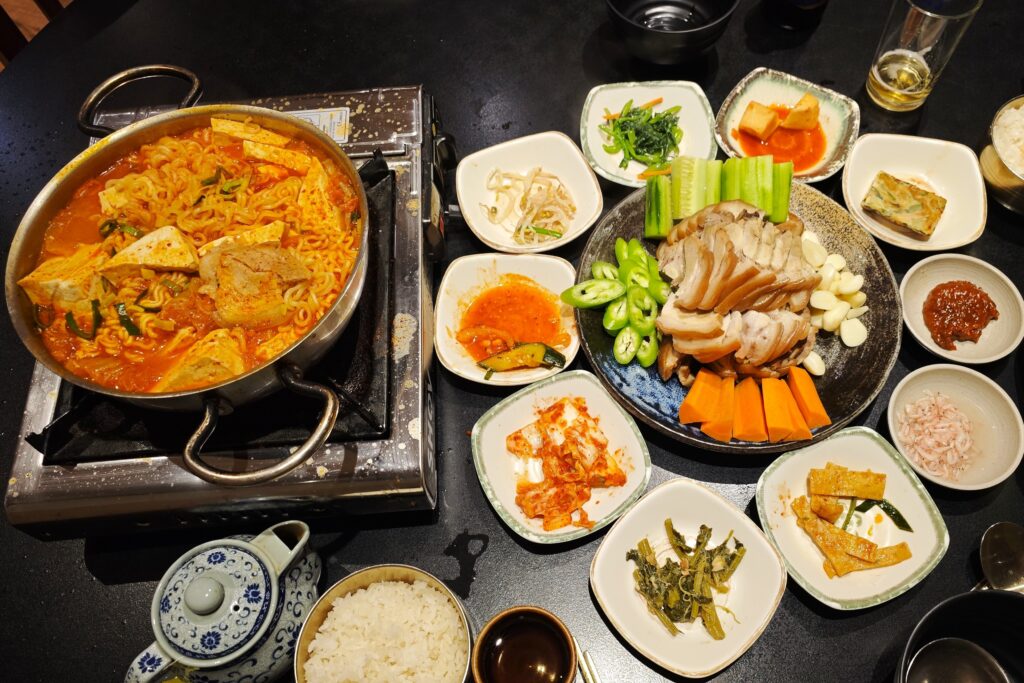Today we’re taking you to a hidden gem – an unassuming yet cozy restaurant that not many people know about. It features spacious square tables, soft-cushioned seating, and a private dining room that fits about 10 people, perfect for larger groups needing a bit more privacy. Tucked away near Konstablerwache station, it may be easy to miss, but inside you’ll find a treasure trove of authentic flavors from Guilin, a region in China known for its breathtaking landscapes and rich culinary traditions.
The iconic Li River (Li Jiang or 漓江) of Guilin, so stunning it graces the back of China’s 20-yuan banknote, is a symbol of the region’s natural beauty. But beyond its scenic wonders, Guilin is just as famous for its cuisine. As the saying goes, “Guilin’s scenery stands above all, Li Jiang’s flavors bring joy to all (桂林山水甲天下, 漓江美食滿盡歡)”. Historically a cultural crossroads in southern China, Guilin became a melting pot of culinary influences from Central China, Fujian, Guangdong and beyond. The result is a diverse range of flavors – crispy and fragrant, tangy and spicy, with bold or delicate tastes – all coming together in unique flavorful fusion.
Restaurant Profile
- Name of the Restaurant: Lijianger Restaurant
- Adress: Porzellanhofstraße 10, 60313 Frankfurt am Main
- Style: Chinese Cuisine – Rice Noodle Dish, Stir-fries, Dim Sum
- Price: around 15 – 25 EUR per Person (incl. drinks and tips)
Bai Qie Ji (白切鸡), or poached chicken, is a traditional dish in Cantonese cuisine that highlights the chicken’s natural flavors. This delectable dish gets its name from its cooking method, which involves poaching the chicken in plain water. The chicken is served warm with bones, cut into bite-sized pieces that are easy to pick up with chopsticks.
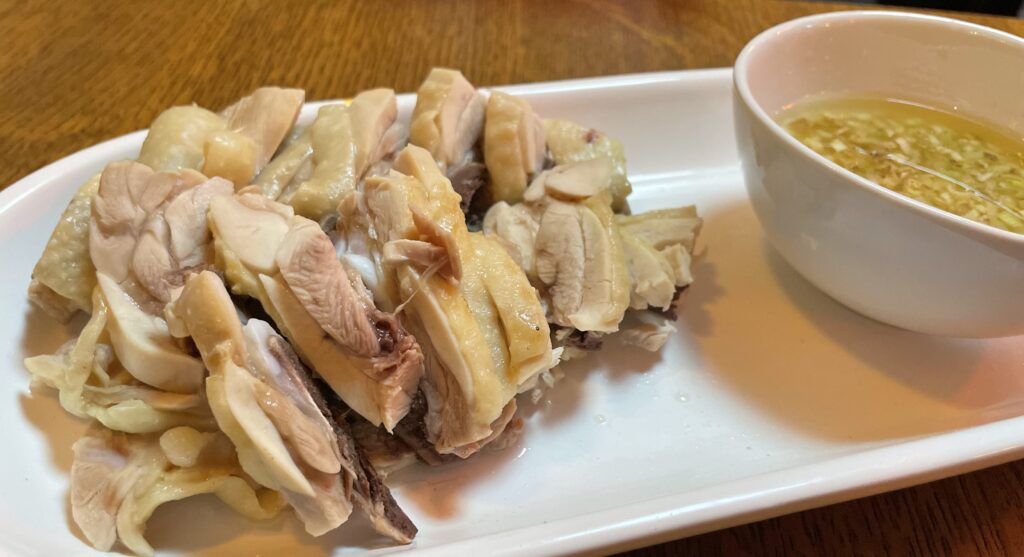
The magic of Bai Qie Ji lies in its simple yet elegant preparation: no spices or heavy seasonings are added during cooking. The chicken is either immersed in hot water or steamed to perfect tenderness, allowing the pure, juicy essence of the meat to come through fully. The result is a remarkably succulent chicken with smooth, silky skin that is both fragrant and slightly chewy.
Accompanying this dish is a sauce made from scallion oil, chicken broth, soy sauce, a touch of white sugar, and finely minced ginger, finished with a drizzle of sesame oil. This creates a savory dip that perfectly enriches the chicken’s delicate flavor – a balance of umami, sweetness, and a hint of ginger spice that elevates the dish without overpowering it.
Bai Qie Ji embodies the Cantonese culinary values of freshness and simplicity. Even without any sauce, its flavor is exceptional, allowing you to savor the pure taste of the chicken in all its glory. For those seeking an extra kick, some enjoy pairing it with a chili sauce on the side which provides a pleasant contrast to the dish’s mild flavors.
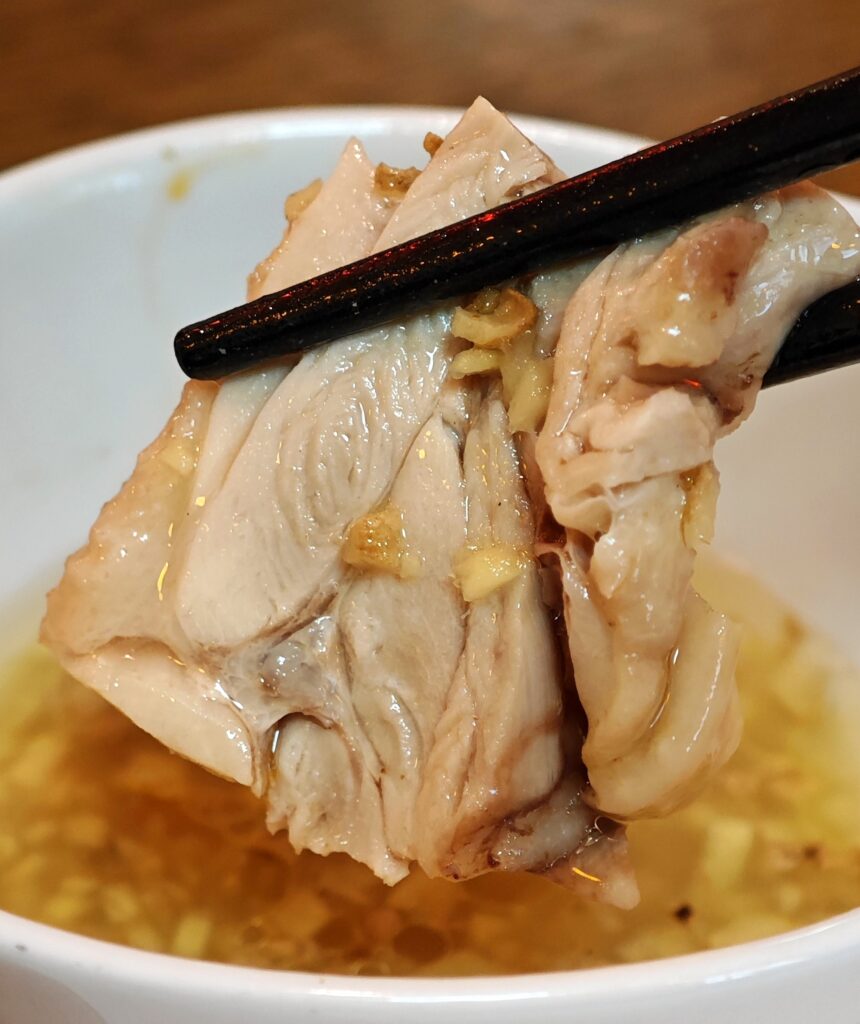
These next two appetizers feature cilantro (also known as coriander) as the main ingredient. In Asia, cilantro is loved for its refreshing taste and health benefits, packed with antioxidants and vitamins that can help reduce inflammation. However, it’s a bit of a love-it-or-hate-it herb—due to genetic variations, some people may experience a soapy taste. So, if cilantro is not your thing, you might want to skip these two dishes.
The first is a zesty cold salad (凉拌木耳 or Liang Ban Mu Er) made with wood ear mushrooms, finely chopped cilantro, and chili peppers, topped with onions and toasted sesame seeds. Tossed in a light dressing of soy sauce, vinegar, and sesame oil, it has a tantalizing blend of spicy, tangy, and savory. The wood ear mushrooms add a slightly wobbly texture that pairs beautifully with the crisp cilantro and the kick from the peppers, making each bite both refreshing and appetizing.
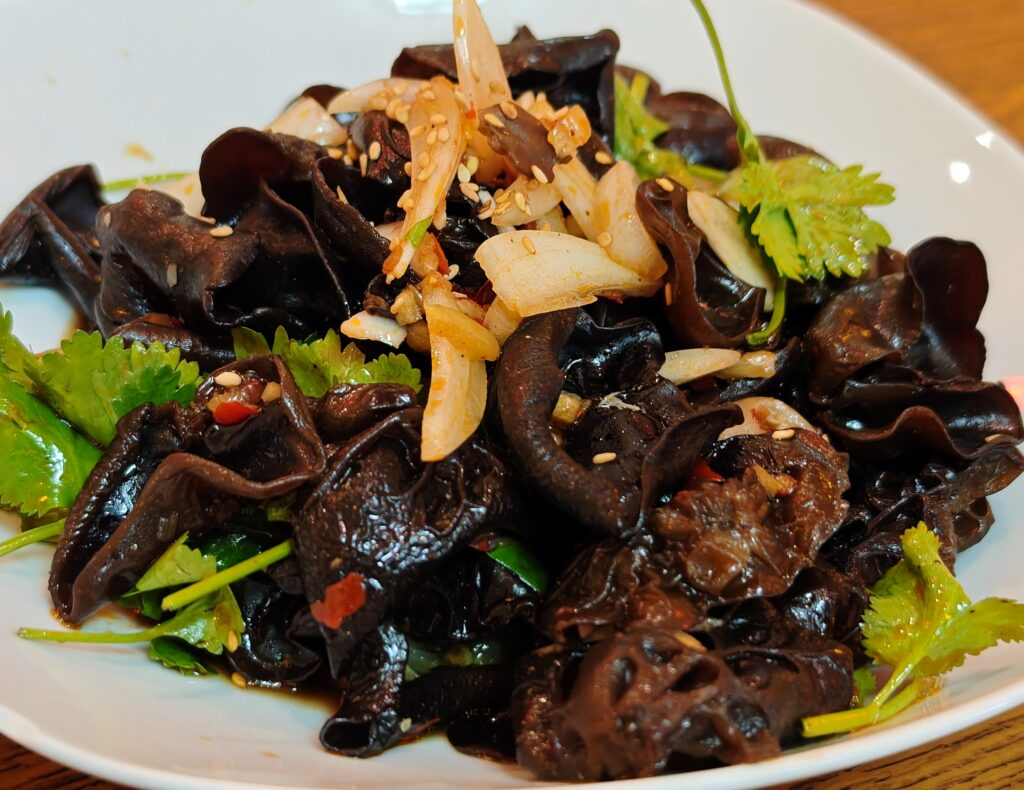
Up next is the fiery Lao Hu Cai (老虎菜), or “Tiger Salad,” a bold dish from northeastern China. The “Tiger Salad” derives its name from its intense, spicy kick, much like the fierce bite of a tiger. This salad features a sharp mix of leeks, cilantro, green chilies, peanuts, and red bell peppers, all tossed in a spicy dressing. The flavor is intense and addictive, combining a robust crunch with a mouth-tingling heat.
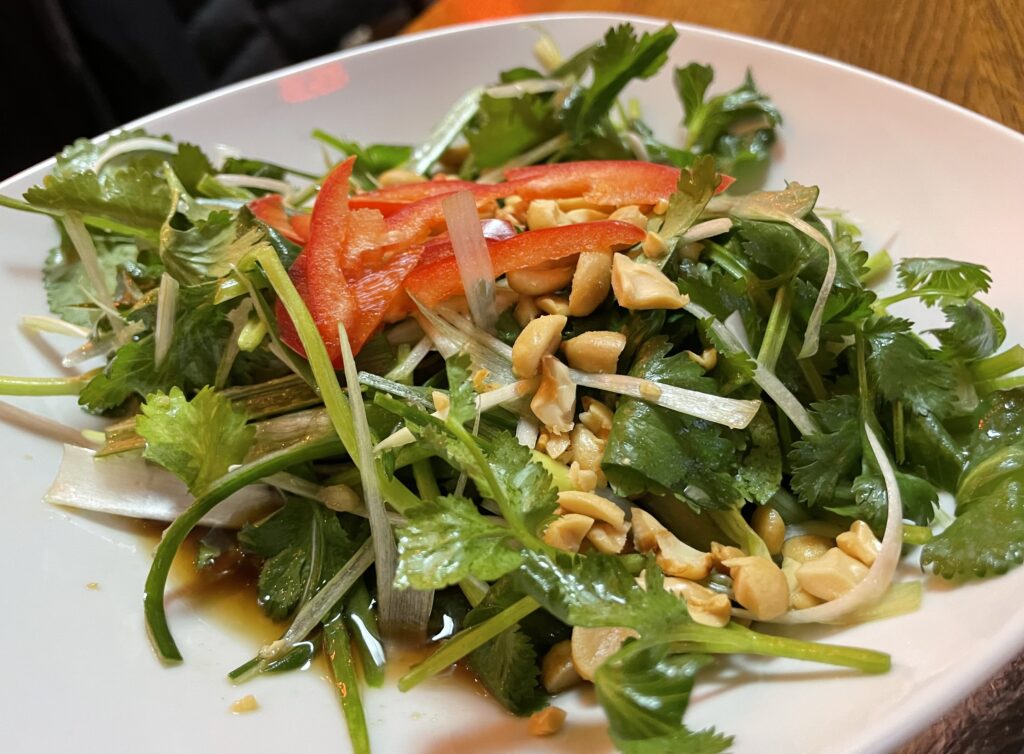
Lao Hu Cai is also a popular pairing with China’s potent baijiu (strong Chinese liquor), as the spice from the salad and the burn of the alcohol intertwine, creating a unique, powerful sensation that keeps you hooked for more.
Gan Guo Ji (干锅鸡), or Dry Pot Chicken, is a signature dish from Sichuan, renowned for its bold and spicy flavors. This dish, a local favorite at Lijianger, has its own twist: the chicken is lightly fried before stir-frying, giving it a crispy exterior while keeping the inside tender and juicy.
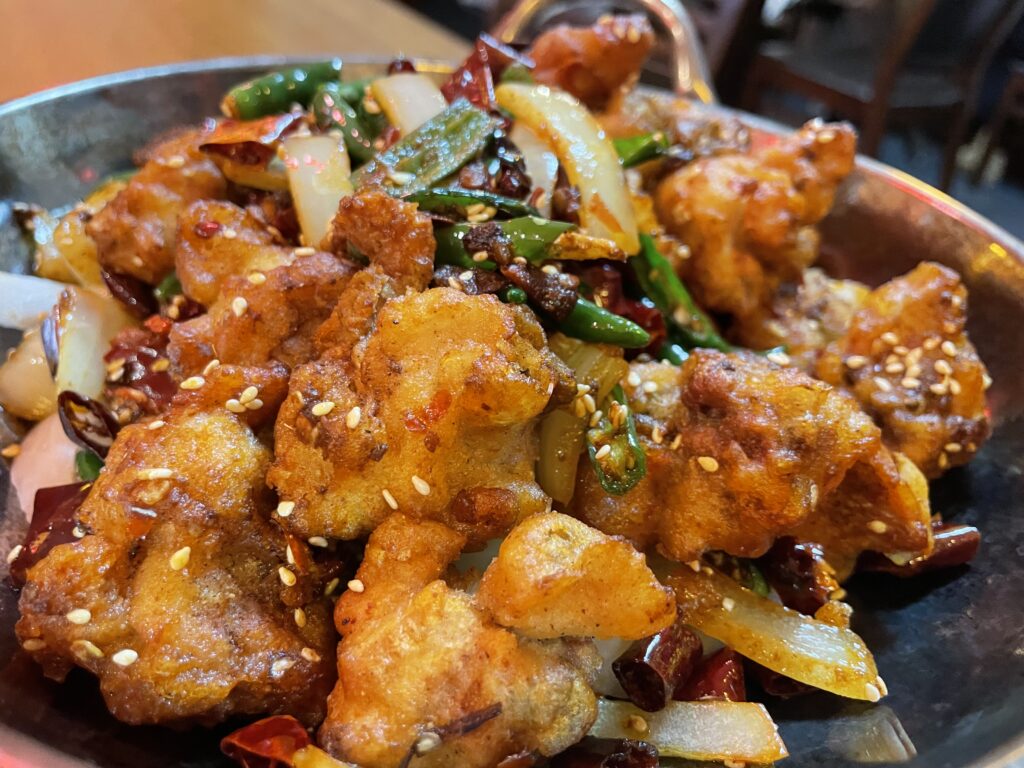
Packed with small green chilies, onions, Sichuan peppercorns, dried red chilies, garlic, ginger and celery, this dish delivers a mouthwatering combination of heat and fragrance. Served in a sizzling pot, the spices meld together beautifully, delivering the characteristic numbing sensation (mala) from the peppercorns that complements the fiery kick of the chilies and amplifies the flavor depth.
The chicken, served bone-in, absorbs all the flavors from the spices, delivering an enticing mix of spicy, savory, and slightly numbing tastes. The meat itself boasts a natural umami, often described as “self-made MSG” due to its glutamate.
Though not officially on the menu, this dish is one of the most requested – a true hidden star that you won’t want to miss!
Tie Ban Dou Fu (铁板豆腐), or Hot Plate Tofu, features silky egg tofu, lightly seared to form a golden crust while remaining wonderfully creamy within. The egg tofu, easily a favorite among tofu lovers, has a rich, custard-like flavor and is full of protein and nutrients.

Sizzling away on a hot plate, the tofu is stir-fried with savory minced pork, fresh scallions, and crisp carrots, creating a colorful medley that invites you to dig in. The slight brothiness adds a soothing touch, making each bite a comforting experience.
The egg tofu’s subtle yet distinct flavor, harmonizing with the savory minced pork and fresh vegetables, provides a satisfying mouthfeel that combines rich, umami tastes with tender textures. It’s a dish that promises to leave you feeling warm and fulfilled!
Huang Men Yang Rou (黄焖羊肉), or Braised Lamb in Yellow Sauce, was once a favored delicacy in the imperial court of the last Qing Dynasty emperor. Originating from northwestern China, this dish is known for its aromatic and crispy texture that is rich yet not greasy.

The lamb, expertly braised, soaks up the thick Huang Men sauce, which is both fragrant and deeply savory. The scallions and onions lend a crisp sweetness, enriching the succulent lamb pieces. The meat has a gratifying chew, with a good balance of fat and lean.
The term “Huang Men” refers to a unique flavor profile characterized by rich umami, mellow sweetness, and a subtle heat that offers comforting warmth. This exquisite taste is achieved through a fusion of spices and seasonings, including ginger, scallions, star anise, and cinnamon. Together, they create a deep, robust, and inviting aroma that envelops the dish
While this dish not always available, don’t hesitate to ask for it when you visit — it’s definitely worth trying!
Gan Guo Hua Cai (干锅花菜), or Dry Pot Cauliflower, is a delicious vegetarian dish that’s sure to please those who love crunchy textures with a bit of a kick. The “hua cai” in this dish, a Chinese cauliflower, differs from the Western variety with its longer stems and looser florets, giving it a firmer, crunchier bite.
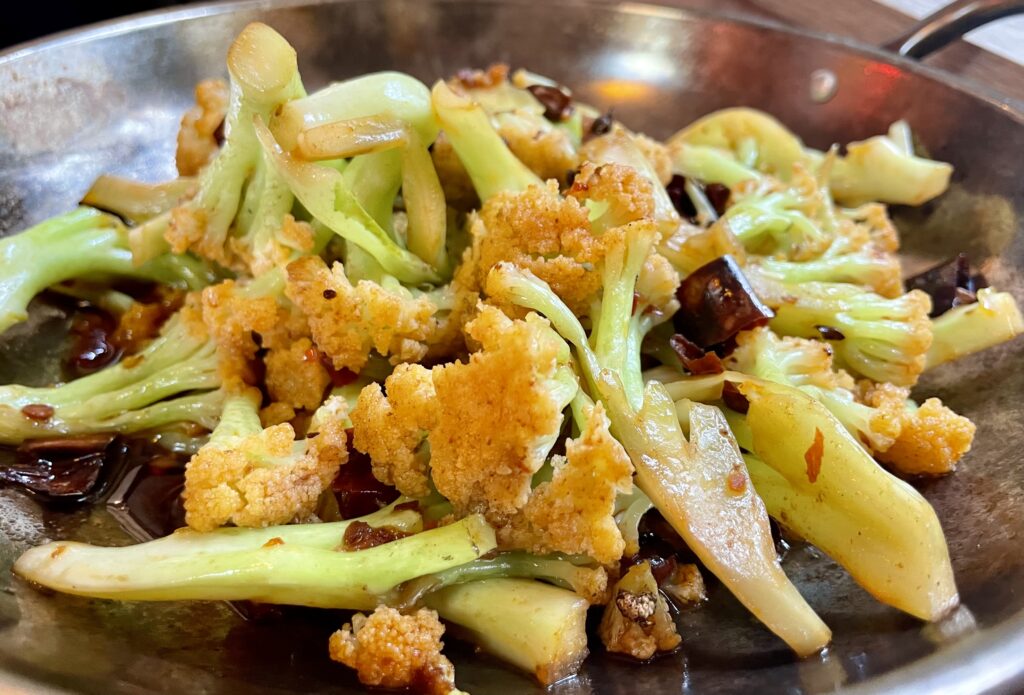
This dish is stir-fried in a sizzling pot with dried red chilies and garlic, delivering a savory, mildly spicy flavor. The garlic brings a fragrant depth, while the chilies infuse a gentle warmth. The cauliflower itself remains crisp and fresh, absorbing the flavors of the spices while retaining its natural sweetness. It’s one of those simple yet flavorful dishes that proves vegetables can be anything but boring!
Málà Yángròu Bǎo (麻辣羊肉煲), or Spicy Numbing Lamb Stew, is an off-menu dish that’s definitely worth inquiring about. This dish features slow-braised juicy lamb, elevated by the bold and fiery flavors of Sichuan cuisine.
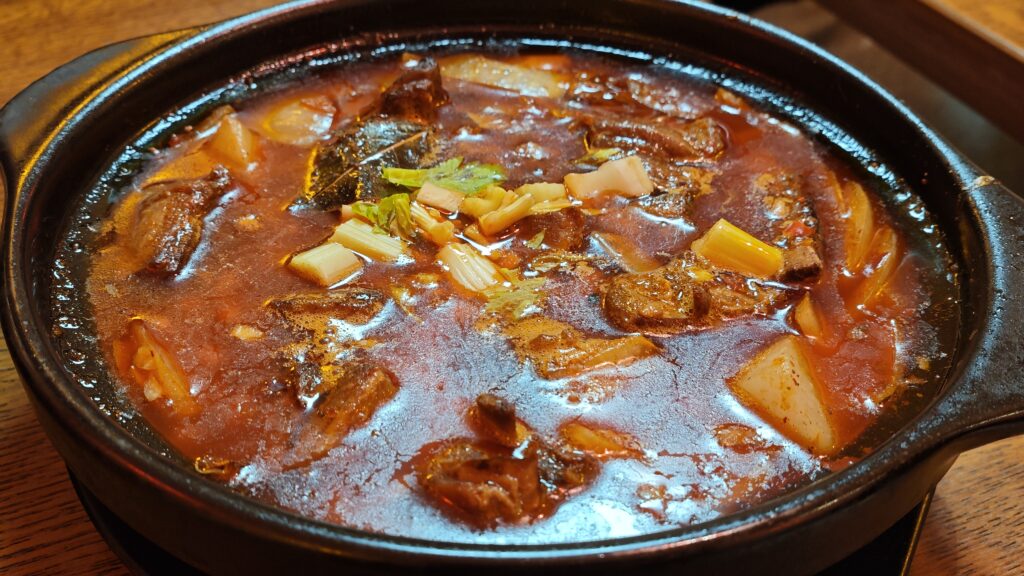
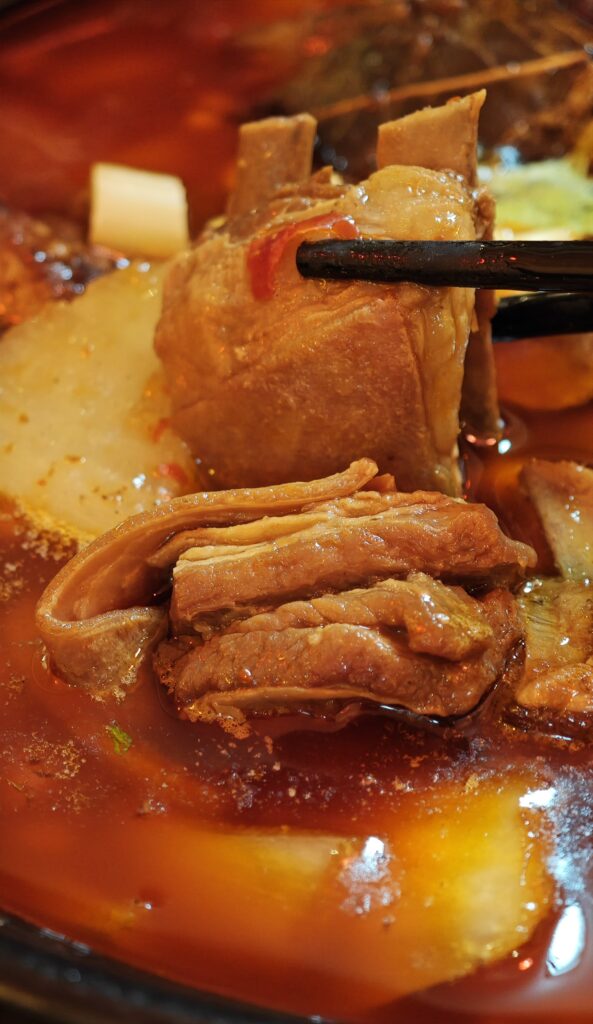
The lamb is succulent, with a good mix of lean and fat, making each mouthful indulgently rich yet tender. The broth is deeply aromatic, infused with málà (麻辣) heat (spicy and numbing), which leave a distinctive tingling sensation. The use of bay leaves lends an earthy, herbal aroma that complements the lamb’s natural gaminess.
The stew is loaded with daikon radish, carrots, onions, and celery, each soaking up the broth’s intense flavors. The tender radish, in particular, pairs wonderfully with the lamb, offering a light, subtly sweet contrast to the rich meat.
There is also a non-spicy version – the Jiàngxiāng (酱香) variation, which replaces the fiery málà with a savory, soy-based braise. This version has a deep umami flavor that’s rich, slightly sweet, and more comforting.
Xue Cai Mao Dou (雪菜毛豆), or Pickled Mustard Greens with Edamame, is a bright, tangy dish that instantly whets your appetite.
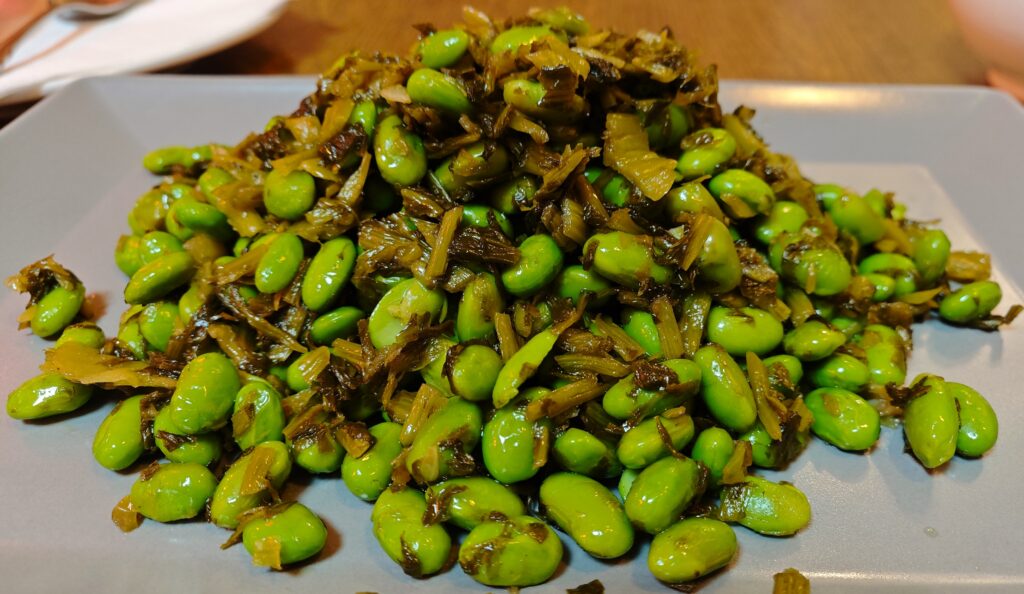
The pickled mustard greens (Xue Cai) give a sour punch, while the edamame adds a mild, nutty contrast. It’s light yet packed with zest, with a hint of saltiness, making it a great side dish to accompany heavier meals or enjoy on its own as a refreshing snack.
Hong Shao Dou Fu (红烧豆腐), or Braised Tofu, is a deeply flavorful, aromatic dish that’s all about rich soy-based sauces and slow infusion of flavors.
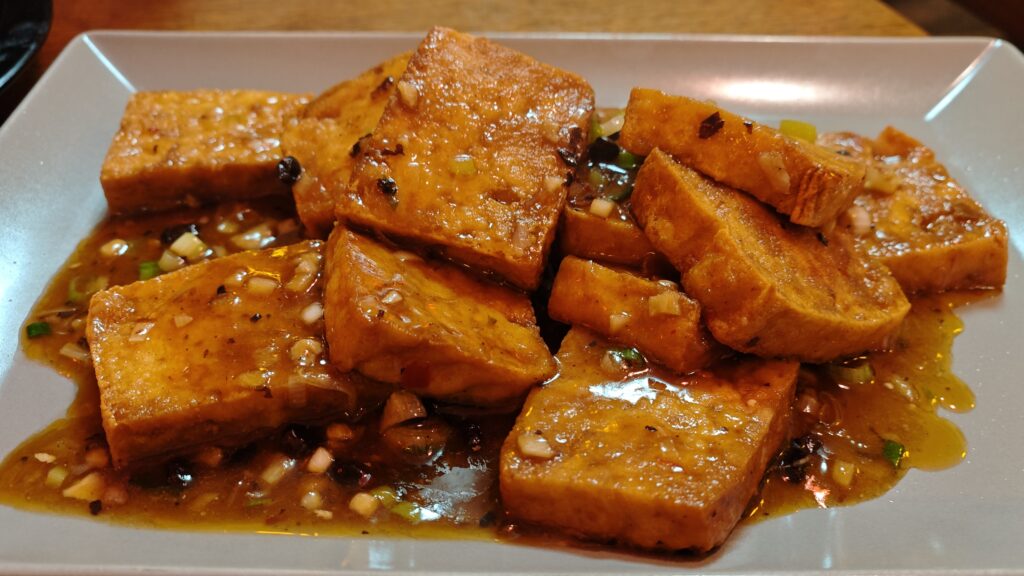
The tofu has a slightly chewy, golden-browned exterior, a result of light frying before braising. Inside, it remains soft and creamy, offering a delicious contrast. The braising sauce seeps into the tofu, infusing it with layers of flavor.
The first impression is undeniably umami and garlicky, thanks to a mix of soy sauce, aromatic garlic, and fermented black beans (豆鼓, Dòu Chǐ). These fermented black beans contribute a deep, earthy, and slightly salty complexity, adding an aged, savory, slightly funky, and almost smoky dimension to the dish. It’s topped with spring onions, for a fresh sharp contrast to the richness.
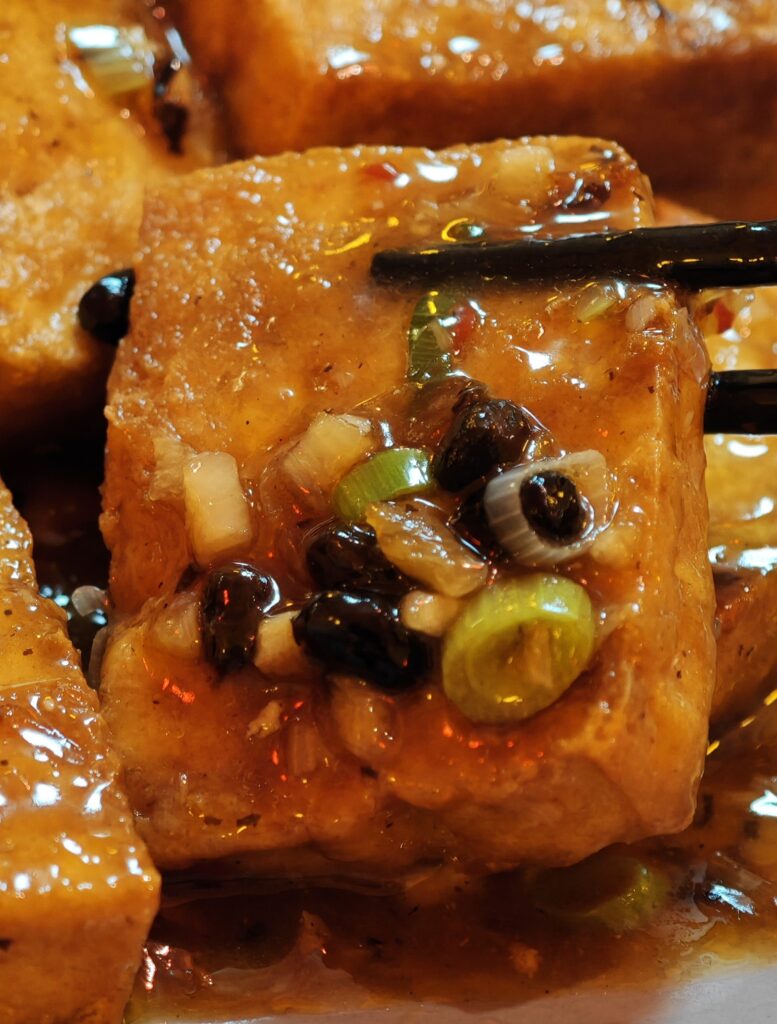
Cù Liū Báicài (醋溜白菜), or Stir-Fried Chinese Cabbage with Vinegar, is a humble but comforting dish. The cabbage is stir-fried to a nice crunch, absorbing the tangy, slightly sweet notes of Chinese black vinegar. It also has dried chilies (干辣椒), which add a hint of warmth without making it too spicy, creating a gentle heat that enhances the overall flavor.
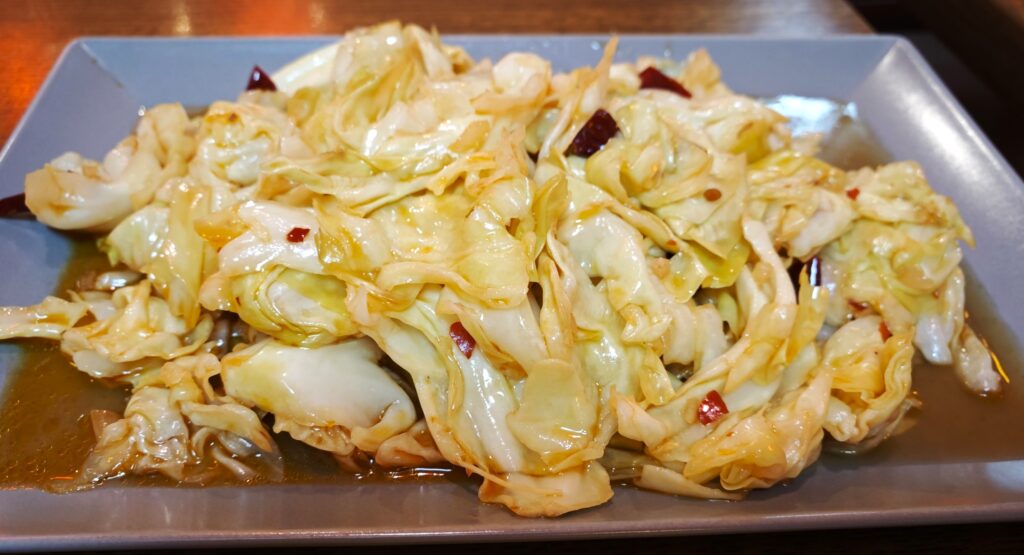
The vinegar not only brightens the taste but also supports digestion, stimulating the palate and making it easier on the stomach. It’s a great choice when you’re looking for something both delicious and easy to digest.
At Lijianger, there’s an impressive array of xiao chao (stir-fries), everyday household dishes from various regions of China. These dishes share the signature tangy, spicy, and savory flavors of Li Jiang, while incorporating regional nuances. While we’ve mostly focused on meat- or veggie-centric dishes, the xiao chao at Lijianger often features a balanced mix of both meat and vegetables.
A good example is Rou Chao Gan Dou Fu (肉炒干豆腐), or Stir-fried Pork with Dried Tofu. This dish includes tender slices of pork, crunchy strips of dried tofu, sharp onions, and small green chilies that add a bit of heat. The tofu has a firm, chewy texture, contrasting nicely with the tender pork and the crisp onions.
Paired with rice, these wholesome dishes are ideal for a simple, solo meal and come at a reasonable price.
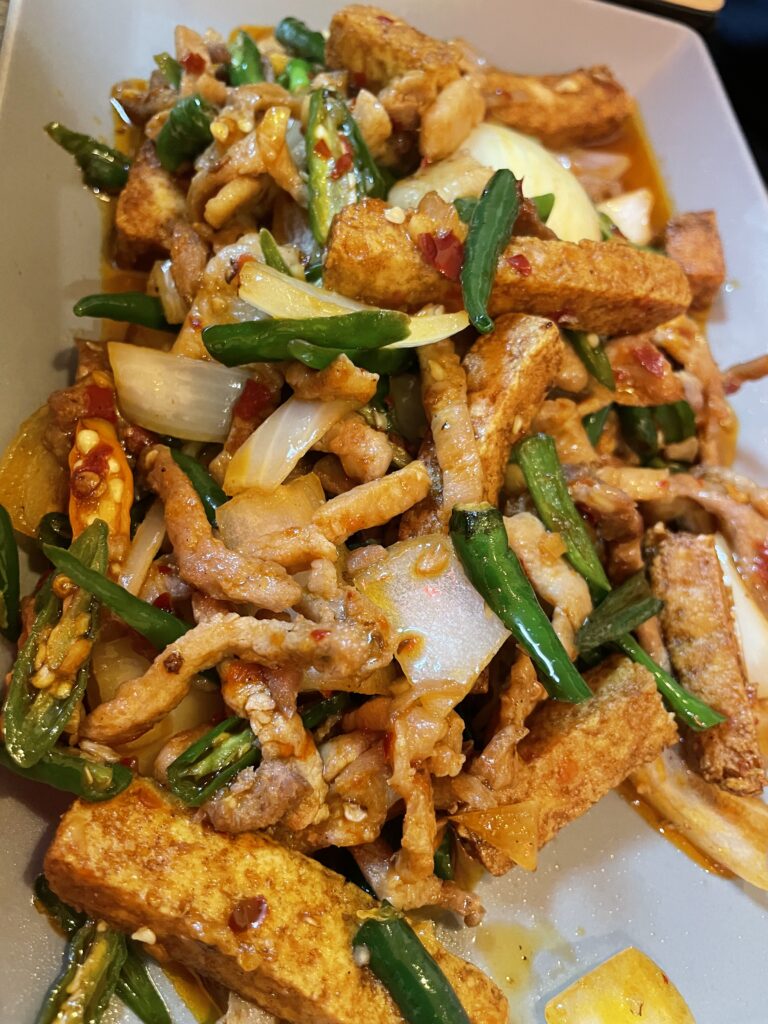
To show just how authentic and local Lijianger truly is, they also offer what some might call “culinary nightmares” (or hellish dishes). These dishes come with intense flavors or strong smells that can be hard for many to handle, but those who love them find them utterly fascinating. You’ll rarely find these dishes in overseas Chinese restaurants because they’re perhaps too authentic to be widely popular.
But don’t worry—if you happen to order one, the experienced waitstaff, familiar with European preferences, will kindly “warn” you that it might be too much for your palate and give you a chance to reconsider. For the seasoned Asian food fans, however, here’s a breakdown of some of these bold dishes—just in case you’re feeling curious or ready to get adventurous!
Luo Si Fen (螺蛳粉), or River Snail Rice Noodles, is a beloved specialty from Guangxi, China, and has earned its place on the National Intangible Cultural Heritage List since 2020. Famous for its bold and unique flavor, the magic of this dish lies in its one-of-a-kind broth.
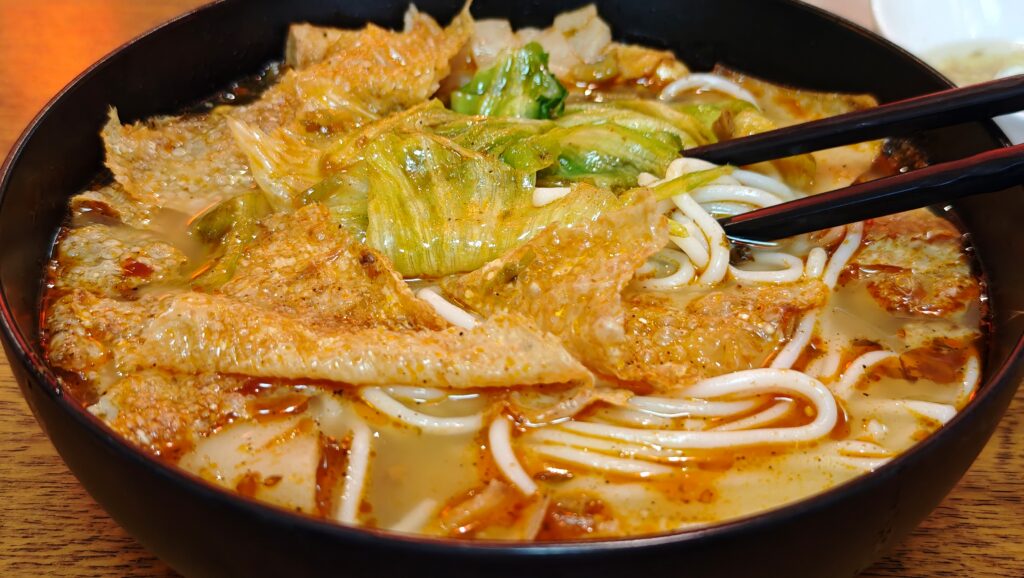
The rich, aromatic soup is crafted by simmering river snails with an enchanting blend of spices, including galangal, star anise, cinnamon, cloves, and various chilies. Although the snail meat is discarded after the broth is made, as all the essence has been extracted into the soup, the resulting flavor is deeply savory and full of umami.
Served over smooth rice noodles, Luo Si Fen is topped with pickled bamboo shoots, crunchy peanuts, crispy fried tofu skin, fresh cabbage, etc.
Luo Si Fen is a love-it-or-hate-it dish largely because of its strong, distinct flavors and aromas. Many are put off by the pungent smell, particularly from the pickled bamboo shoots (酸笋). They have a fermented sharp, sour aroma that’s sometimes described as “stinky” in a similar way to durian or certain types of cheeses. The spicy, sour, and umami flavors can also be quite intense. The pickled and fermented elements combine with hot chili oil and strong spices, creating a flavor explosion that can be too much for those with milder tastes.
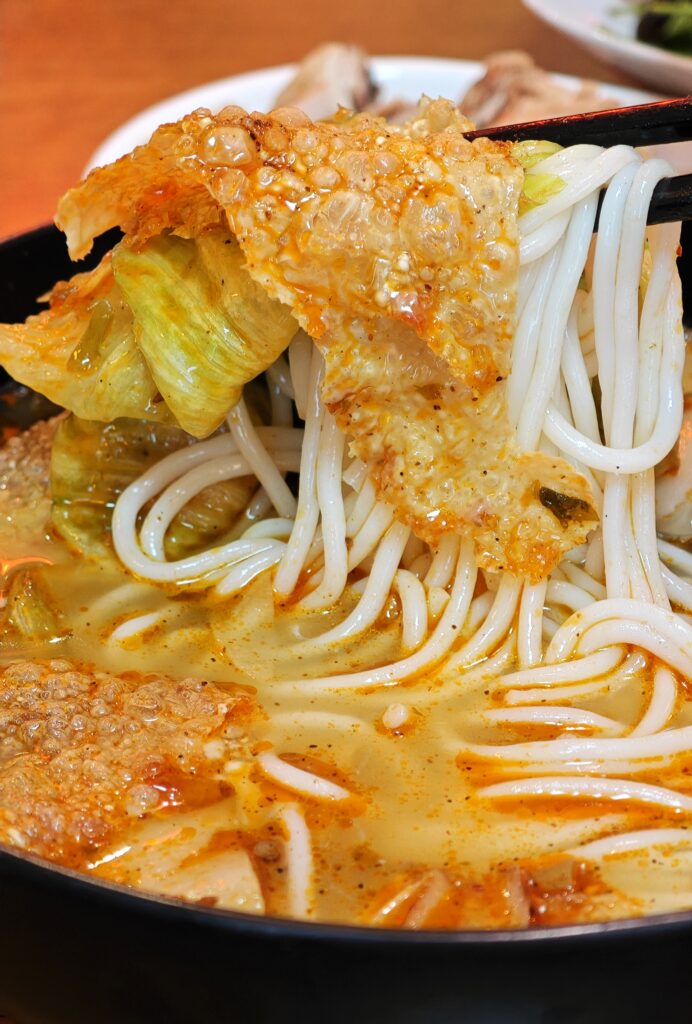
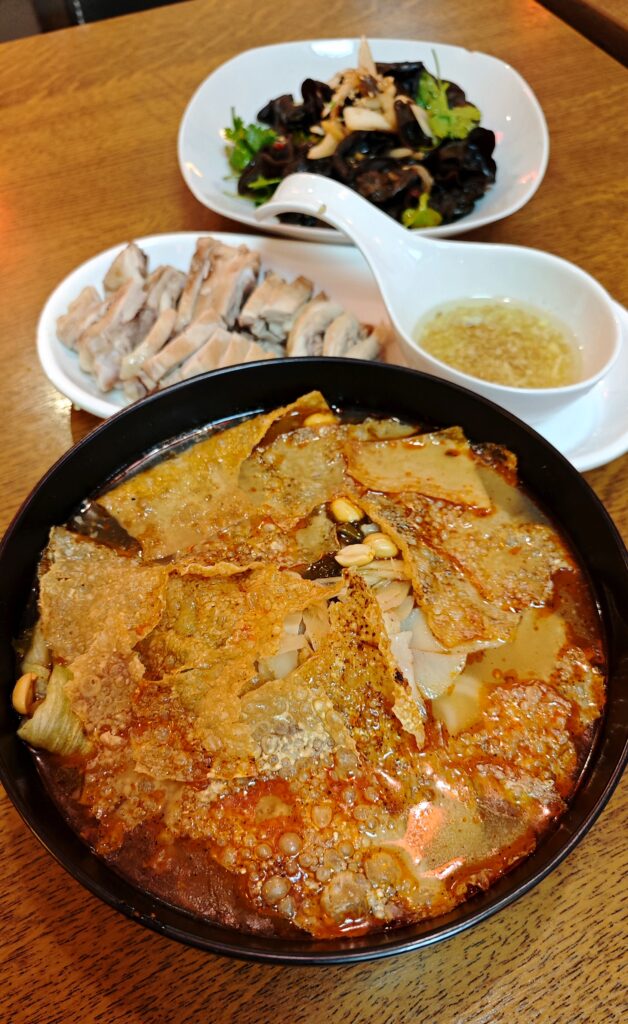
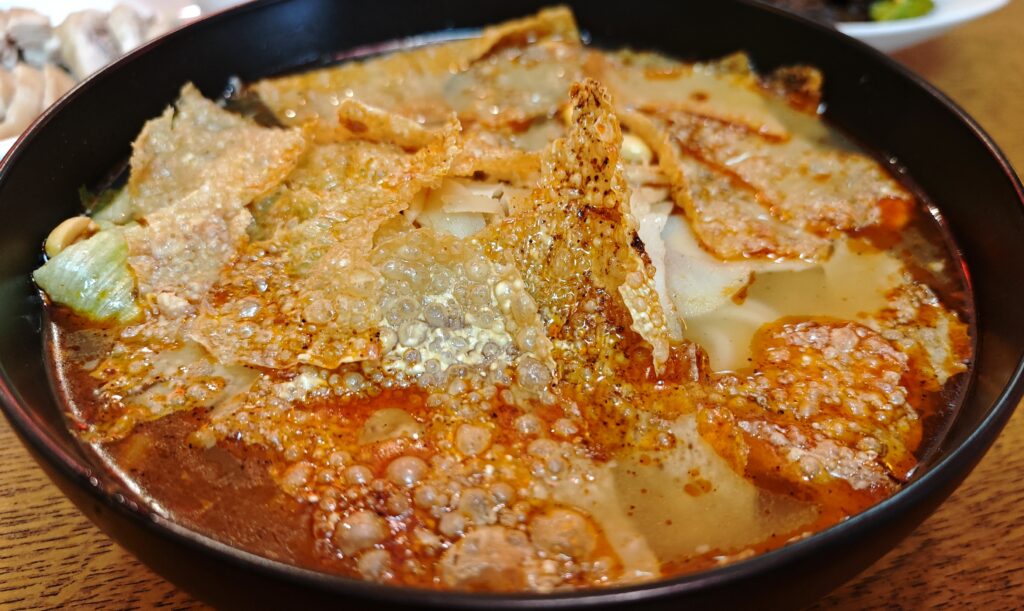
On the other hand, those who really like Luo Si Fen often love it for these very reasons. The intense aroma and strong taste create a unique sensory experience. I personally enjoy the contrast of the sour bamboo shoots with the rich, spicy broth and crispy toppings like fried tofu skin. If you like bold, adventurous flavors, Luo Si Fen is a must-try – with its thrilling mixture of tanginess, heat, and umami, all anchored by a deeply flavorful broth.
Chou Dou Fu (臭豆腐), or Stinky Tofu, is a popular fermented snack from regions like Changsha, Hubei, Nanjing, Shaoxing, and Taiwan. Each region has its own way of preparing and serving it. Lijianger’s version features a crunchy, golden exterior with a soft, creamy center. It’s topped with fresh green onions and cilantro, and served with a deeply flavored broth.
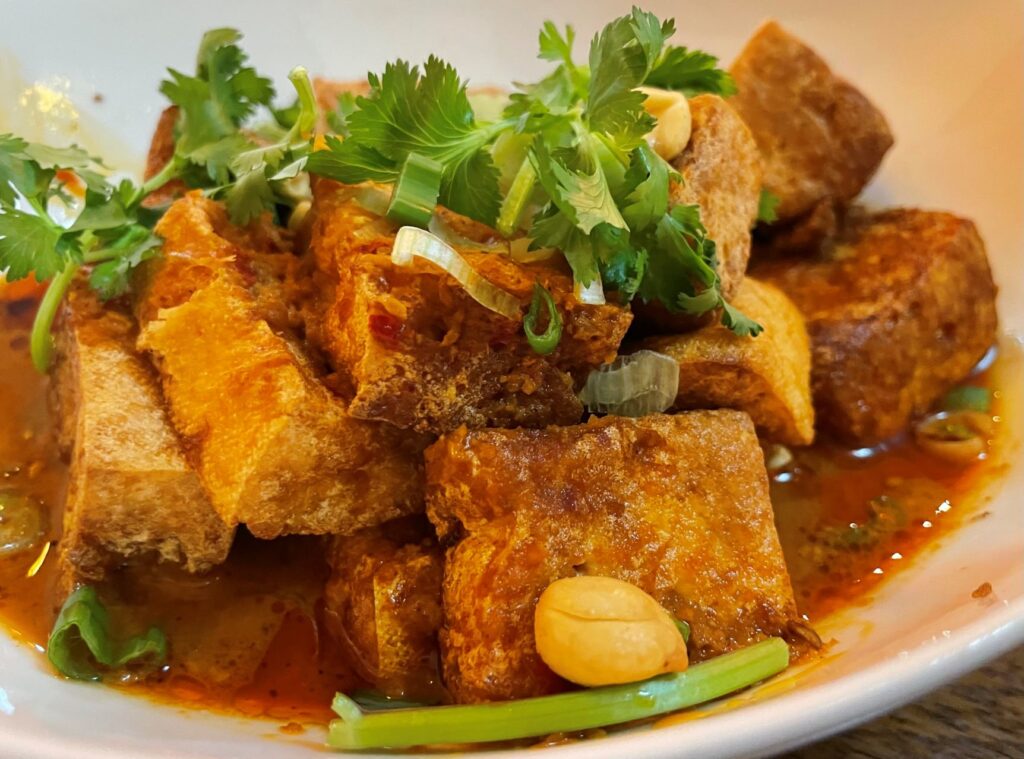
While its strong, pungent aroma might catch you off guard, the tofu itself has a surprisingly mild taste with a ripened tang and an earthy richness. It absorbs the seasoning and broth, providing a tangy, garlicky, spicy and savory flavor, with a hint of umami. Though its smell may deter some, those who enjoy it find the combination of bold flavors and crispy texture absolutely addictive.
Gan Guo Fei Chang (干锅肥肠), or Dry Pot Pork Intestines, is a robust, savory dish that’s packed with heat and spice. Stir-fried with dried chilies, fresh green peppers, onions, and lotus root, it delivers a fiery kick alongside tender bites of pork intestines. The intestines themselves have a slightly chewy, rich texture, absorbing the spices while offering intense, umami-filled taste.
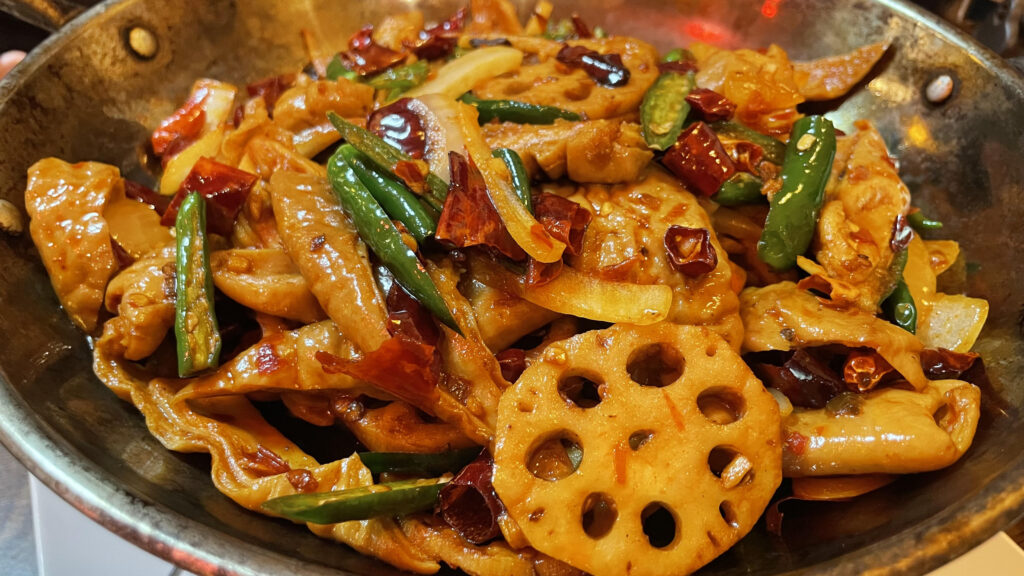
The intestines aren’t overly fatty, but rather well-seasoned and hearty without being greasy. Its strong, distinct flavor and chewy texture may be an acquired taste, but for those who love rich, spicy food, the soft, succulent pieces, bright red hue, and deeply fragrant aroma make this dish truly irresistible.
Beyond its famous Luo Si Fen, Lijianger offers a wide variety of rice noodle dishes, from hearty beef to light seafood, minced pork, and fish noodles, with flavors ranging from spicy and sour to delicate and mild. The menu is also filled with specialties like Lemon Beer Duck (柠檬啤酒鸭), spicy clams (麻辣花蛤), Sichuan classics like poached beef or fish in chili broth (水煮牛肉/鱼), spicy numbing stir-fry pot (麻辣香锅), and an assortment of dim sum (点心) and comforting congees (粥).
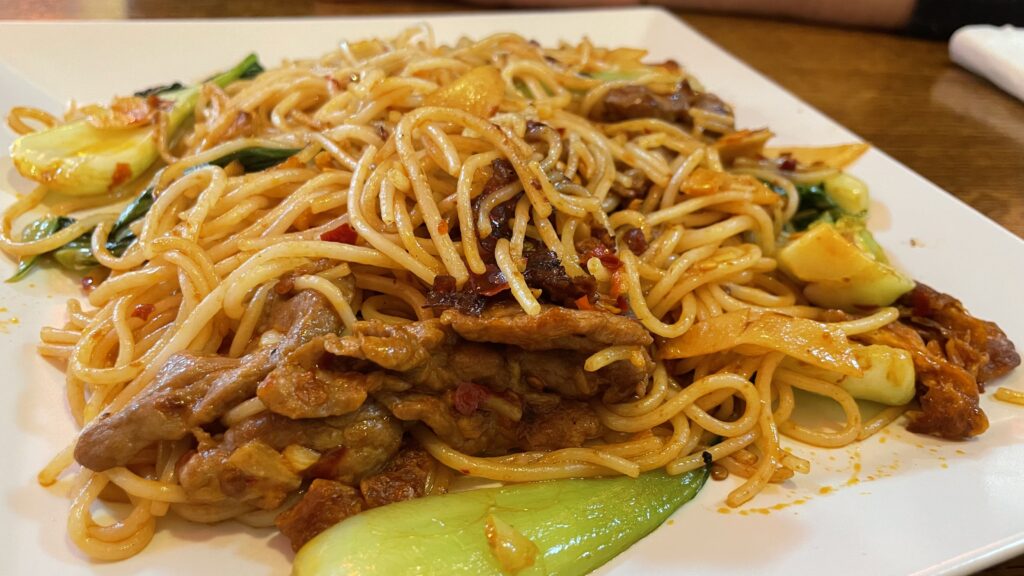
For drinks, they have a good selection of Chinese teas, featuring an array of fragrant brews infused with various flowers and herbs. They’re quite healthy and mild in flavor. With a pot priced at around 5 euros, it’s good to share among 2-3 people.
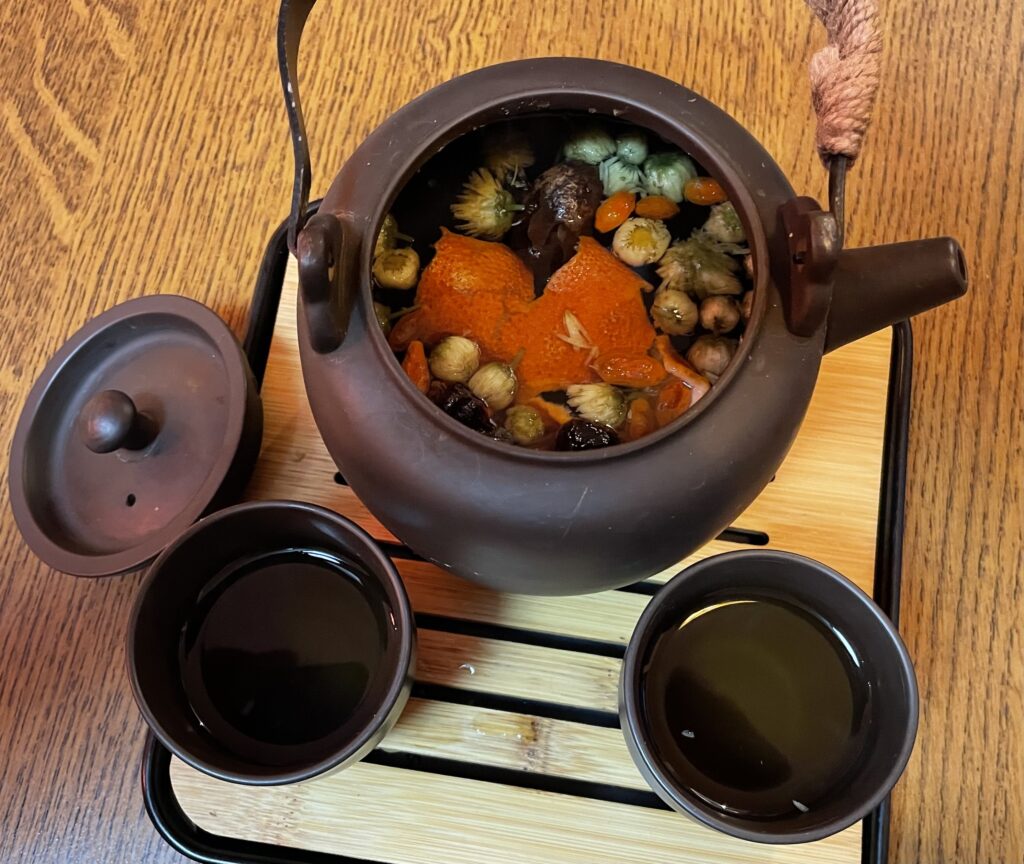
In the soft glow of evening, as the world outside fades, there’s something deeply comforting about settling down for a quiet, peaceful meal. It’s in these moments that you may remember the gentle advice from family: no matter how ordinary the day, always take time to eat well. The elders often say: to nourish yourself with good meals, while embracing each passing season, is life’s most profound practice – a quiet mastery of living. No matter the achievements, a healthy body is life’s greatest asset. And that strength, that vitality, is found not in grand gestures, but in the warmth of everyday meals, amidst the everyday hum of life.

Outside, the weather may be dreary—fall slipping away, with the sudden chill of damp air creeping in. But when the stomach finds comfort in a steaming bowl of noodles or a well-balanced dinner, the heart, too, begins to feel at ease. It’s these small, unremarkable moments that make a day beautiful.

